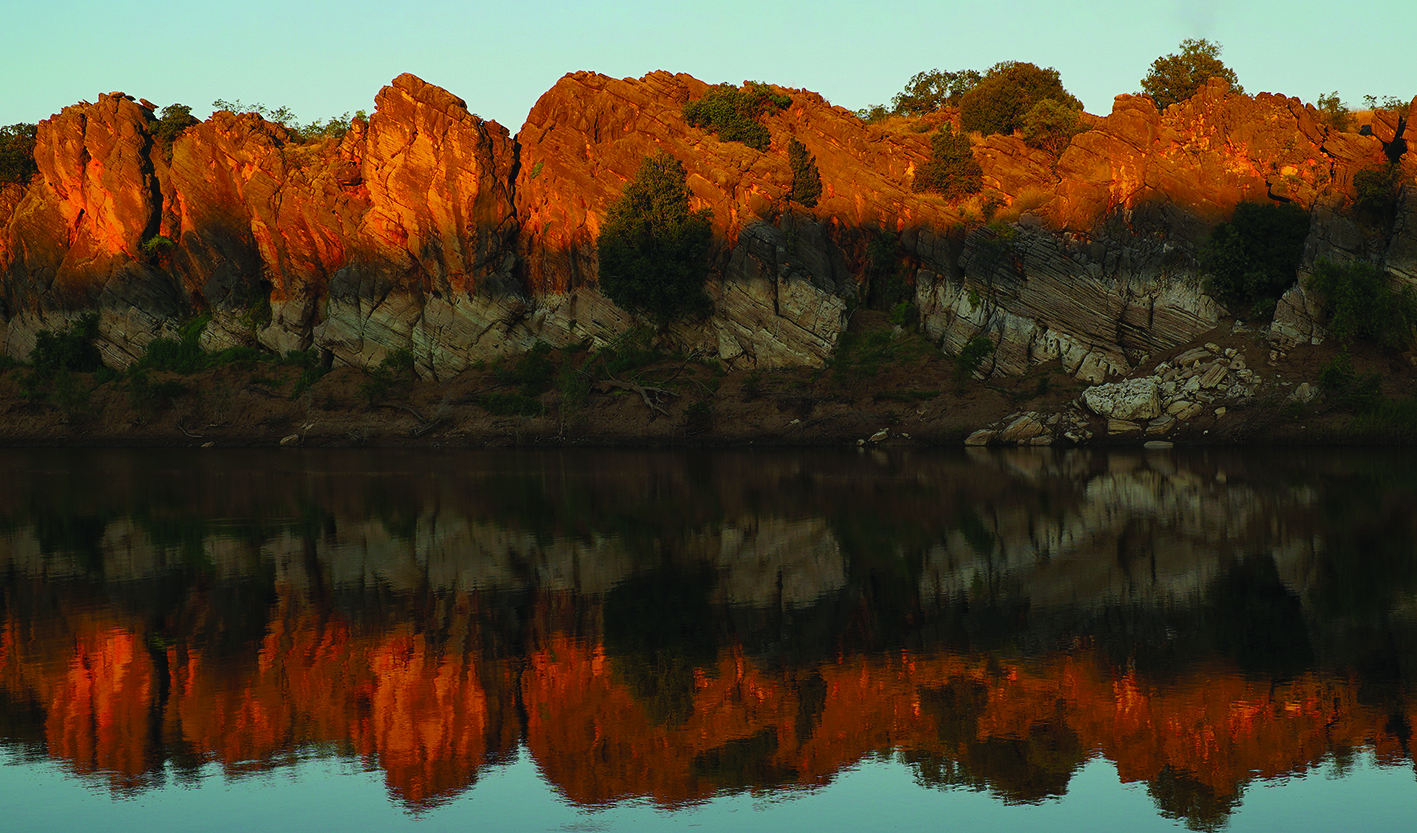‘How are we, as Australians, letting our country be developed [and for] whose benefit?’ This is the question posed in voiceover in the opening sequence of feature documentary Undermined: Tales from the Kimberley (Nicholas Wrathall), which premiered at the 2018 Melbourne International Film Festival (MIFF) and was financed by the MIFF Premiere Fund. It’s the urgent question at the heart of a complex and complicated collection of stories that are at times inspiring, disturbing and baffling.
An Australian filmmaker who has spent many years living and working in New York, Wrathall is best known for the 2013 political and literary portrait documentary Gore Vidal: The United States of Amnesia. He is also a writer and producer on Undermined, alongside Stephanie King, an award-winning campaigner around welfare and sustainability. While Wrathall and King are white Australians, the voices showcased in their unashamedly political film are almost exclusively Indigenous. Importantly, young Bardi / Kija / Nyul Nyul activist and musician Albert Wiggan, also a co-producer and adviser on Undermined, emerges as the documentary’s most compelling character.
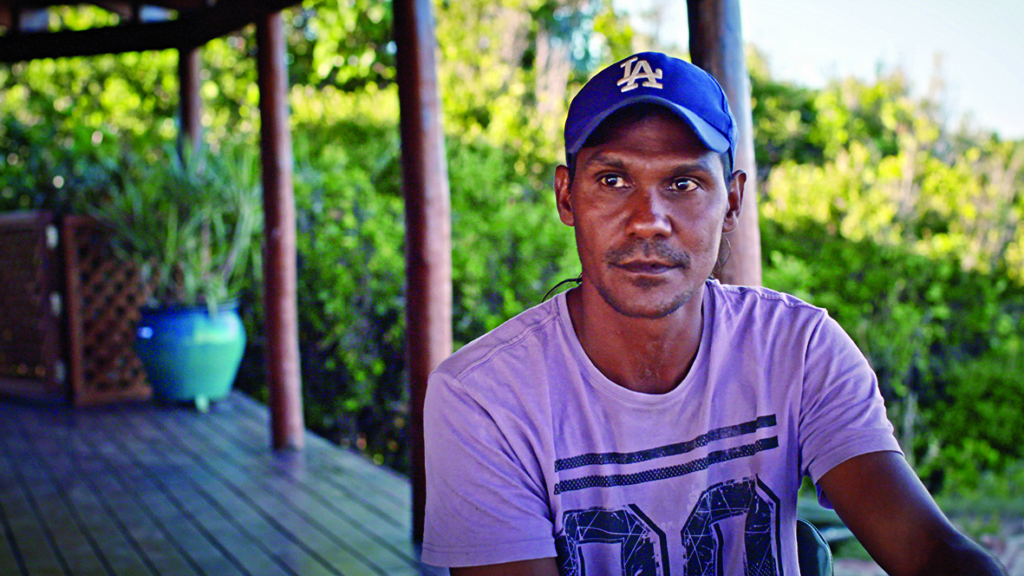
The region in question is the Kimberley, located in the north of Western Australia (WA) – a stunningly beautiful and mineral-rich territory roughly three times the size of England. A substantial proportion of its long-term residents are Indigenous, and more than half of them live in around 200 remote Aboriginal communities, comprising anywhere from twenty to 900 people.[1]The Australian Bureau of Statistics (ABS) estimates that the proportion of residents of Indigenous descent is around 42 per cent, while the filmmakers, referring exclusively to long-term residents, put the figure closer to 75 per cent. See ABS, ‘Kimberley’, 2016 Census QuickStats, <http://quickstats.censusdata.abs.gov.au/census_services/getproduct/census/2016/quickstat/51001>, accessed 11 February 2019; and Amnesia Productions, Undermined: Tales from the Kimberley press kit, 2018, pp. 5, 8. But, with the full support of state and federal governments, Big Mining and Big Agriculture are fast moving in, promising jobs but posing serious threats – not just to the local communities, many of which are being pressured to negotiate or shut down, but also to the natural environment, particularly the fragile freshwater supplies of the Fitzroy River.
The opening montage of Undermined sets the scene for a vast and complicated series of stories. We see a map of Australia: mostly brown, but with delicate fringes of green. The frame’s focus shifts to the top-left-hand corner of the map, so big and bright in its own right. Cut to breathtaking aerial and low-level drone footage of crystal-blue oceans, cresting whales, white-sand beaches and red canyons; there are lush waterfalls, rust-gold sunsets and flocks of cockatoos taking flight. Broome-based director of photography Mark Jones, also a co-producer of the film and a key instigator of the project, obviously knows exactly where to go for those shots of flooded wetlands that mirror the kind of dreamy cloudscapes you only get in the far north.
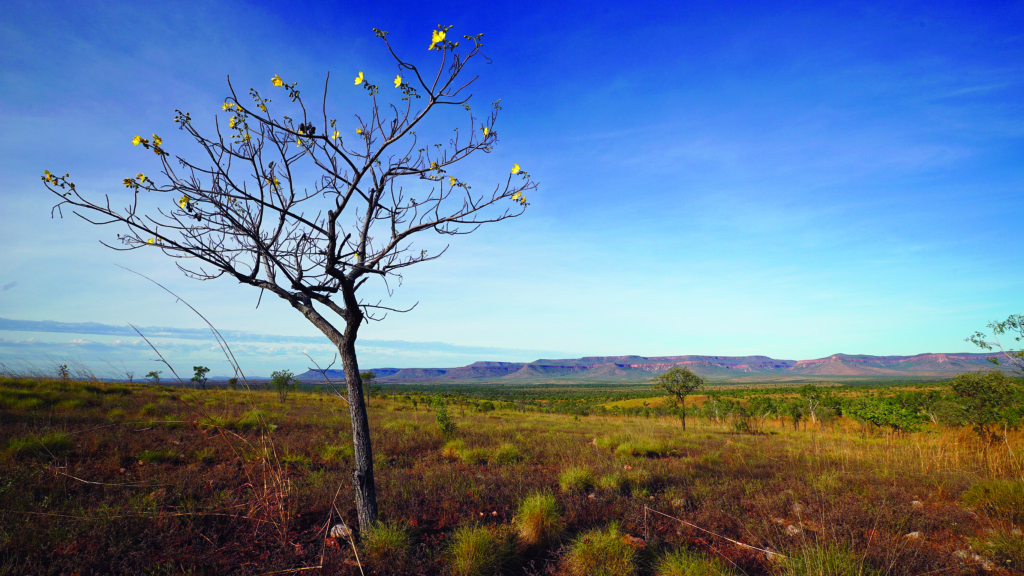
Tourism WA is not, as far as I can tell, a sponsor of this film, but it would be a rare viewer who does not immediately put the Kimberley on their bucket list. This effect is intentional, for one of the film’s key arguments is that cultural and environmental tourism – or the ‘forever industries’, as one interviewee puts it – offer the best future for the region, as opposed to the short-term, precarious benefits afforded by exploitative mining and agriculture, which will eventually pack up and leave the Australian taxpayer to foot the bill for repatriation.
Interspersed with these early landscape shots are scenes of local Indigenous people going about their everyday lives. There are elderly women fishing in a river, a weathered stockman assessing his cattle, kids in baseball caps watching the bucking antics of a rodeo and Aussie Rules footballers wrestling for a mark. In voiceover, the film’s key characters state their cases and concerns. All of them, in different ways, are advocating for Indigenous self-determination and the preservation of the natural environment.
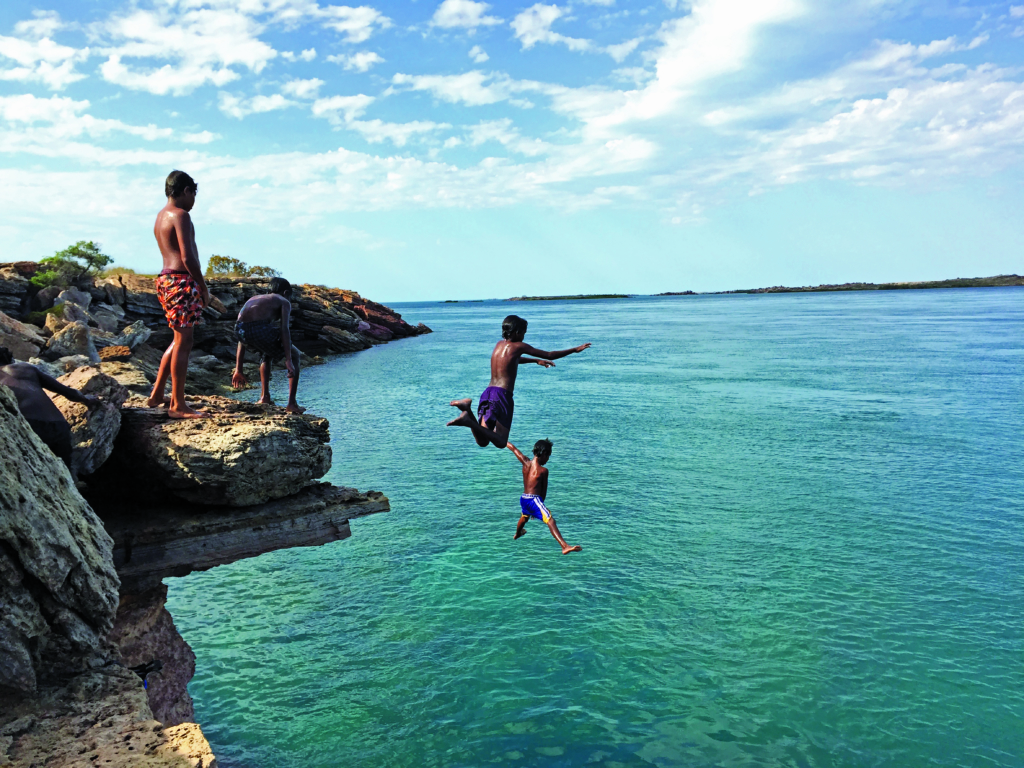
Reading the description above, you might expect Undermined to be a simple documentary with a clear throughline. In reality, however, it’s a knotty and diverse collection of anecdotes and interviews, case studies and issues. These are all tied together by a palpable love and concern for the region, and a loyalty to the individuals and interest groups who have assisted – or, perhaps, enlisted – the filmmakers to tell the world what’s happening up in our country’s north-west. This is a place where mainstream media coverage is sketchy at best and racist at worst.[2]See, for example, Sherryn Groch, ‘In Black and White: Racism and the Mainstream Media’, Overland, 17 October 2016, <https://overland.org.au/2016/10/in-black-and-white-racism-and-the-mainstream-media/>, accessed 14 February 2019. Speaking to MIFF last year, Wrathall said the final documentary represents only a small portion of the stories that he and the team collected in the Kimberley over the two years they spent making the film.[3]See ‘Q&A with Undermined: Tales from the Kimberley Director Nicholas Wrathall’, Melbourne International Film Festival website, 27 July 2018, <http://miff.com.au/blog/story/qa-with-undermined-tales-from-the-kimberley-director-nicholas-wrathall>, accessed 11 February 2019. Reading this, one immediately thinks of the plight of editors Peter O’Donoghue and Andrew Arestides, who were tasked with mining the hundreds of hours of footage for the most compelling storylines, many of which were unfolding in real time and remain unconcluded.
According to Wrathall, the initial impetus for the film came in 2015, when the filmmakers heard stories of the forced closures of Aboriginal communities. The WA government’s official position was that they were dysfunctional or unviable, but the real motive, he and the residents contend, was to open up the land for development.[4]ibid. As the filmmakers set out to investigate, their findings led them to a dense geopolitical web of issues and stories, from the practicalities of land ownership and native title, to the conflicts between and within Indigenous groups, activists and organisations, as well as the tragedies of youth suicide and rural unemployment. Undoubtedly, the filmmakers’ attempts to bring all of these together and make sense of the bigger picture in the region is admirable and necessary. At the same time, the visible challenges of tying so many threads together makes it clear why so many other filmmakers exploring Indigenous stories have chosen to limit themselves to one issue (After the Apology, Larissa Behrendt, 2017), one key character (Gurrumul, Paul Damien Williams, 2017) or one particular Indigenous community (Another Country, Molly Reynolds, 2015).
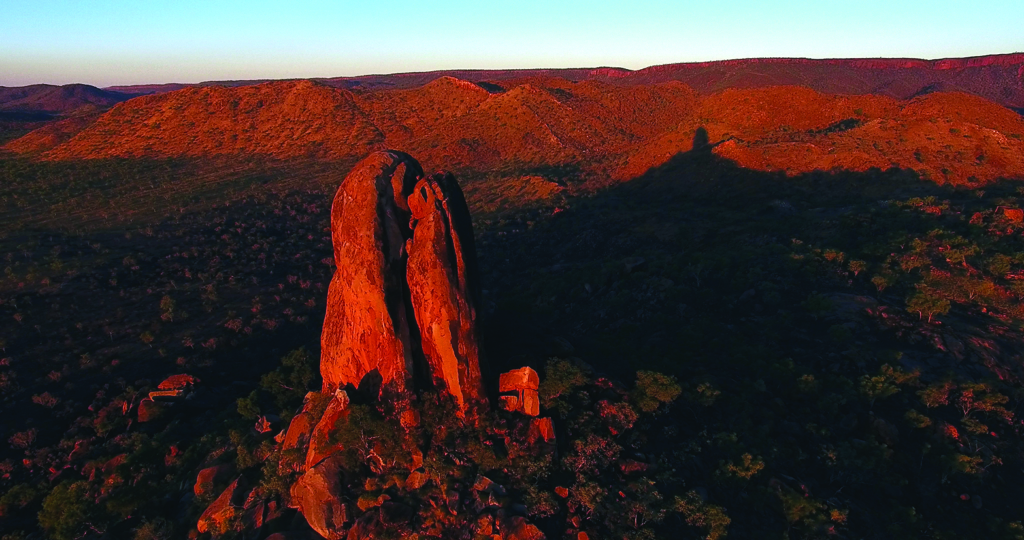
I have watched Undermined several times now and I’m still grappling to get a hold on it. Like the vastness and diversity of the Kimberley landscape itself, the multitude of material presented is sometimes overwhelming, particularly for an ignorant urban viewer far removed from the region and its politics. This ignorance does, of course, proffer the argument that films like Undermined need to exist and find an audience within wider Australia, and also that other filmmakers and journalists must dive in and attempt to answer some of the serious questions it poses.
In contrast to the complex array of Indigenous perspectives presented in the film, the government’s official positions and policies – showcased in short, locked-off interviews – are worryingly simple, even simplistic. Matt Canavan, the Federal Minister for Resources and Northern Australia, talks about removing ‘barriers that stop people from developing the north’. Tony Eyres, of government agency Austrade, talks about the proximity of the region to Asia, whose nations are ‘demanding those natural resources’, and says with concern that the vast majority of WA is held in native title and that a ‘mutually beneficial’ conversation needs to happen. To find their motives suspect seems fully justified, especially in light of the nation’s history of colonial theft and the ongoing mistreatment of Indigenous peoples and their lands throughout Australia.
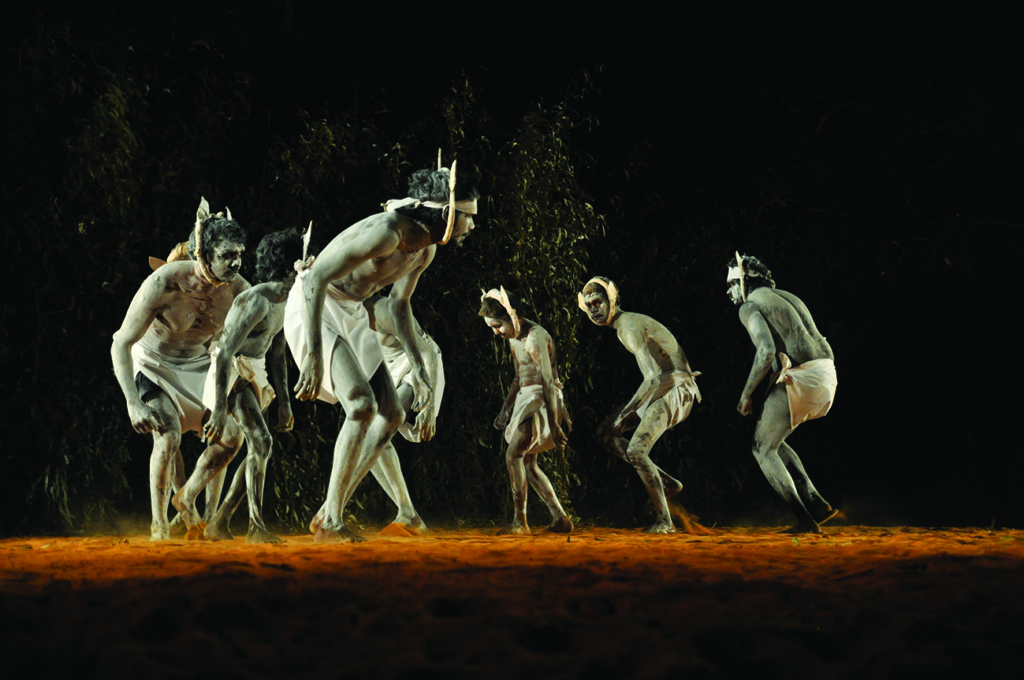
‘There’s this conversation that we gotta close these communities, that they’re not viable,’ says Dr Anne Poelina, Nyikina traditional custodian and Indigenous-rights activist, to-camera in the film. ‘[T]his is part of the ongoing colonial regime to clear Aboriginal people off country. So that we go back to the terra nullius [concept] – nobody, empty country, empty wilderness, nobody cares about it, bring in the mining company.’ She is, of course, referring to the famous 1992 victory of Meriam man Eddie Mabo in the High Court, which threw out the legal doctrine of terra nullius in favour of Australian First Peoples’ native title claims to their lands.[5]See Australian Institute of Aboriginal and Torres Strait Islander Studies, ‘Mabo Case’, 11 September 2015, <https://aiatsis.gov.au/explore/articles/mabo-case>, accessed 19 February 2019. Undermined is keen to show us how this victory has been only partial, and is under attack in in everyday practice.
Moreover, as its press kit states, Undermined is ‘a hybrid style documentary film, investigative by nature, but driven by character – the micro speaking to the macro’.[6]Amnesia Productions, op. cit., p. 10. It’s at the micro level that it’s best understood. One of the film’s subjects is Kevin Oscar, Bunuba traditional owner and long-time station manager of Leopold Downs, a struggling outback cattle farm. From him, we learn that one-third of Kimberley cattle stations are Aboriginal-owned, but that they have suffered from a lack of access to capital and an inability to sell or borrow against their properties. Wrangling jeeps, horses and helicopters, Oscar heads up a small family business that also employs his rangy, bright-eyed grandsons, who work as stockmen. Promising to bring a capital investment and a joint venture to the station is Richard Paterson, a charismatic white man from the Eastern Guruma Pastoral Company, with Undermined following the two men’s story from hopeful beginnings and mutual respect through to disillusionment. Exactly how and why the relationship breaks down remains a little murky. What lingers are the heartbreak that ensues and the resultant lack of work for the young station hands, who must now move into town or interstate. The spectres of alcohol, drugs and suicide are mentioned in this and so many of the film’s other stories.
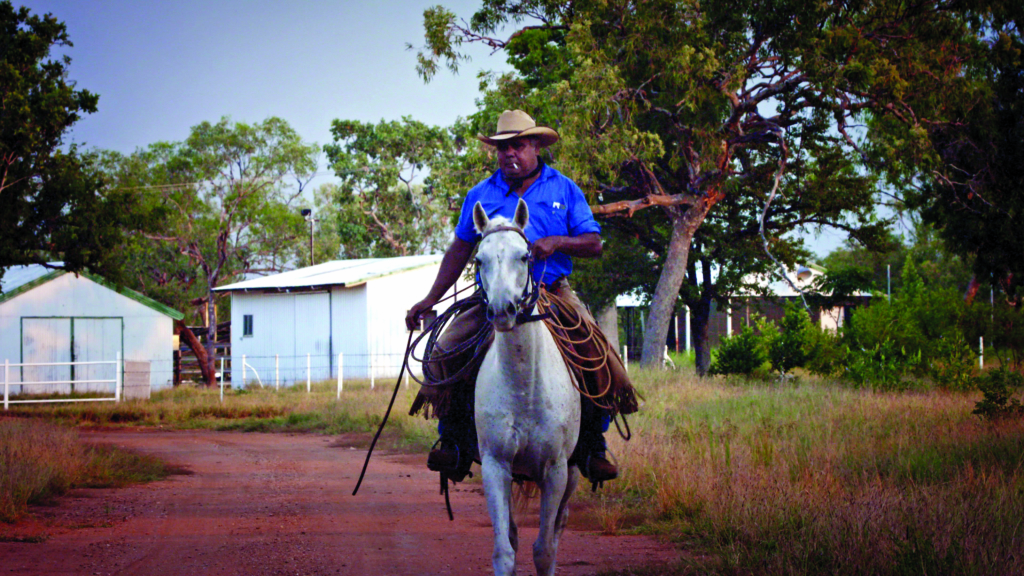
Perhaps the most disturbing impetus for the film is that, in practice, native title means little more than the right for Indigenous groups to sit at the table and negotiate with these giant corporations’ interests, with what various subjects liken to having a metaphorical gun to their heads.[7]ibid., p. 9. As former Kimberley Land Council CEO Wayne Bergmann explains on camera, if consensus cannot be reached within six months, then development goes ahead. As for the rights that the Native Title Act 1993 enshrines – those that legally enable traditional owners to camp, fish and hunt on their native lands – the film shows many cases in which these privileges bang up against locked gates, unanswered mobile phones and unpleasant skirmishes with white land users. Poelina, one of the documentary’s clearest voices, again sums it up succinctly: ‘Native title is the weakest, [most] racist and most oppressive law that we have in this country for Aboriginal people. And how the Native Title Tribunal has been set up [… is] to fast-track development.’
Perhaps the most disturbing impetus for the film is that, in practice, native title means little more than the right for Indigenous groups to sit at the table and negotiate with these giant corporations’ interests, with what various subjects liken to having a metaphorical gun to their heads.
But, if there is one shining star in Undermined, it’s Wiggan. He’s young, handsome and eloquent – a natural leader and entertainer. He accompanied Wrathall and King to the premiere of the film at MIFF, bringing his guitar and performing a song he had composed himself. Having trained at the Western Australian Academy of Performing Arts, he has toured internationally with John Butler and featured in the 2009 SBS documentary Old Country New Country, which chronicles how he was taught raft-making by his uncle. Not only is Wiggan a skilled media performer, but he also brings passion and intelligence to his activism. He has a gift for bridging the gaps – for being a connector between ‘the best of both worlds’, as he put it at the post-screening Q&A.[8]Albert Wiggan, in Undermined: Tales from the Kimberley post-screening Q&A, Melbourne International Film Festival, 8 August 2018. There, Wiggan charmed the audience with the inclusive idea that we are all ultimately connected, our differences less important than our similarities: ‘You go back two-and-a-half thousand years and all of us here in this room were connected to the ancestors. We all come from an indigenous bloodline somewhere. We are all indigenous.’[9]ibid.
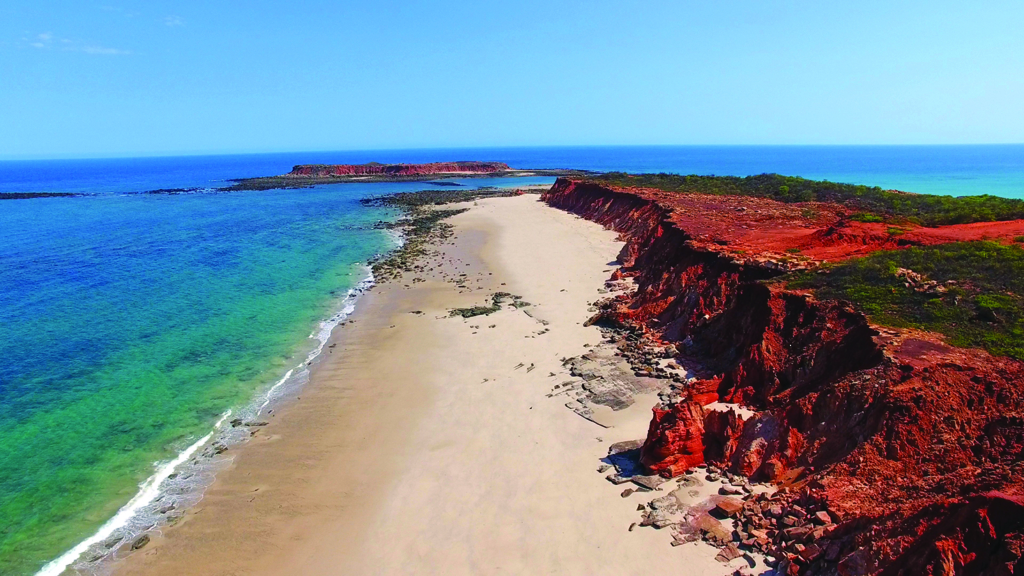
On screen, Wiggan’s journey encompasses so many of the issues wrestled with in the documentary’s other stories, while proposing some practical solutions. As a boy, he grew up with a father who loved hunting and fishing on the remote islands off the Dampier Peninsula. Wiggan Sr’s best friend was the white wildlife filmmaker and crocodile hunter Malcolm Douglas, and the two men had worked together in showcasing and protecting the beauty of the region. In contrast, Wiggan’s mother was a Catholic mission–schooled woman (‘assimilated’, in his words). She valued Western education highly and insisted on sending her son away to a private boy’s school in Perth, where he was the sole Indigenous student among 2500 kids. We’re shown photos of him from that time period: the one dark face on the football team, or dressed up in tuxedos at school balls accompanied by white female classmates.
As a young man, Wiggan had come home, fallen in love with a local girl and, with her, had a baby too young. The dreamy look of disbelief he gets on his face when he reflects on love is one of the film’s sweetest and funniest moments: ‘Talk about mysteries. Love – I can never understand that thing!’ he says, shaking his head as if that’s a topic for another film. Rocked by his father’s death around the same time that his child was born, Wiggan rediscovered country through a trip he was taken on by Douglas (whom he has described as his ‘white second father’[10]ibid.). He then became a vocal activist in the much-publicised 2013 victory against the Woodside gas development at James Price Point.[11]Amanda Cavill, ‘Woodside Abandons James Price Point Gas Hub’, SBS News, 26 August 2013, <https://www.sbs.com.au/news/woodside-abandons-james-price-point-gas-hub>, accessed 11 February 2019.
At the time, he was opposed to the Kimberley Land Council’s methods; now, as a director of the council, he is trying to work within it rather than against it, and even talks about the need to bring young blood into an organisation that has been dominated by elders. Wiggan also works as a land ranger, collecting data about endangered species, particularly the region’s native bilby, about which he’s a recognised expert. Within the film, he preaches compellingly about the ways in which Indigenous science uses the same practices of observation and trial-and-error as Western science, and about how the council’s land-ranger program is an example of sustainable Indigenous industry.
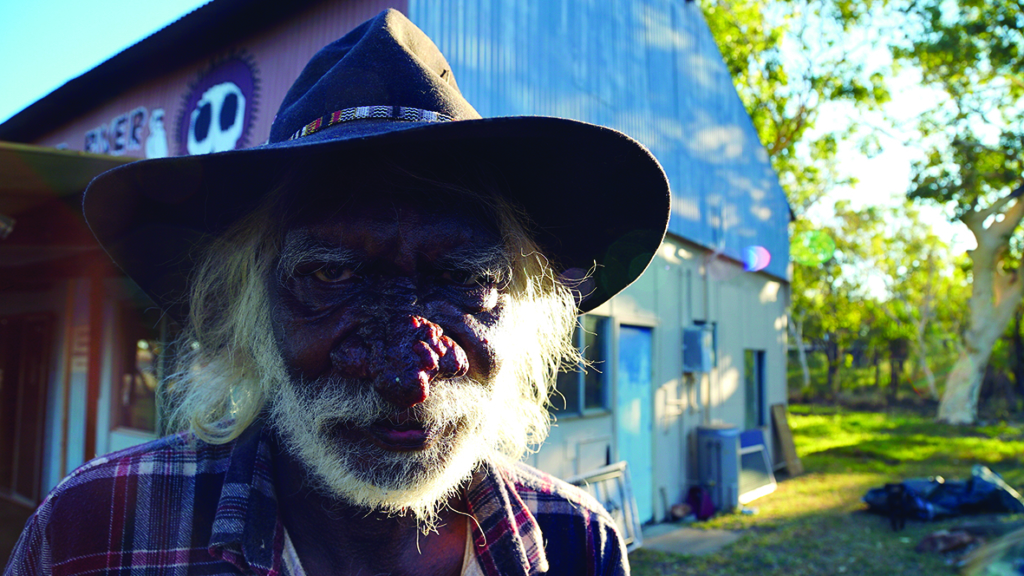
Asked by a MIFF audience member what he wanted Undermined to achieve, Wiggan gave the kind of response that deserves reproducing in full:
Help us. All we need is that little bit of capital. Unfortunately, the only people prepared to extend us capital at the moment are mining and agriculture. That’s not something we are totally opposed to as Indigenous people. We understand the importance of developing healthy economies and supporting our state and national economies. We get those concepts. But we want people to help us, as Indigenous people, to develop our own Indigenous industries.[12]Wiggan, op. cit.
Undermined may be an overflowing bag of heavy and unfinished stories, but it wisely chooses to conclude with Wiggan’s wise words and impassioned delivery. ‘Aboriginal Australia doesn’t want to go into your backyard, doesn’t want to disturb you. It doesn’t want to exploit your resources or your privacy [or] your inheritance,’ he says as the music swells. ‘Whereas, every single day, Aboriginal people are facing that dilemma. We will have a really meaningful conversation about this. That’s the opportunity that’s here in the Kimberleys.’
Whatever questions might remain, the film’s portrait of this emerging Indigenous leader is crystal-clear and unforgettable – and a very good start to that conversation he’s asking for.
Endnotes
| 1 | The Australian Bureau of Statistics (ABS) estimates that the proportion of residents of Indigenous descent is around 42 per cent, while the filmmakers, referring exclusively to long-term residents, put the figure closer to 75 per cent. See ABS, ‘Kimberley’, 2016 Census QuickStats, <http://quickstats.censusdata.abs.gov.au/census_services/getproduct/census/2016/quickstat/51001>, accessed 11 February 2019; and Amnesia Productions, Undermined: Tales from the Kimberley press kit, 2018, pp. 5, 8. |
|---|---|
| 2 | See, for example, Sherryn Groch, ‘In Black and White: Racism and the Mainstream Media’, Overland, 17 October 2016, <https://overland.org.au/2016/10/in-black-and-white-racism-and-the-mainstream-media/>, accessed 14 February 2019. |
| 3 | See ‘Q&A with Undermined: Tales from the Kimberley Director Nicholas Wrathall’, Melbourne International Film Festival website, 27 July 2018, <http://miff.com.au/blog/story/qa-with-undermined-tales-from-the-kimberley-director-nicholas-wrathall>, accessed 11 February 2019. |
| 4 | ibid. |
| 5 | See Australian Institute of Aboriginal and Torres Strait Islander Studies, ‘Mabo Case’, 11 September 2015, <https://aiatsis.gov.au/explore/articles/mabo-case>, accessed 19 February 2019. |
| 6 | Amnesia Productions, op. cit., p. 10. |
| 7 | ibid., p. 9. |
| 8 | Albert Wiggan, in Undermined: Tales from the Kimberley post-screening Q&A, Melbourne International Film Festival, 8 August 2018. |
| 9 | ibid. |
| 10 | ibid. |
| 11 | Amanda Cavill, ‘Woodside Abandons James Price Point Gas Hub’, SBS News, 26 August 2013, <https://www.sbs.com.au/news/woodside-abandons-james-price-point-gas-hub>, accessed 11 February 2019. |
| 12 | Wiggan, op. cit. |
